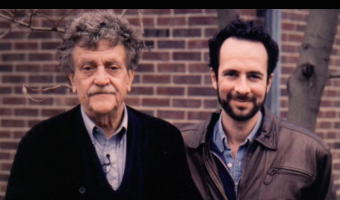Collaborative writing is a way to make a document better than if it were written by one person. Things can get better through uncertainty and seeming disorder. In his book, Antifragile: Things That Gain from Disorder, Nassim Nicholas Taleb looks at human activity from this unique perspective:
Some things benefit from shocks; they thrive and grow when exposed to volatility, randomness, disorder, and stressors, and love adventure, risk, and uncertainty. Yet … there is no word for the exact opposite of fragile. Let us call it “antifragile.” Antifragility is beyond resilience or robustness. The resilient resists shocks and stays the same; the antifragile gets better.
– From Chapter 1, Part 2, in my Audible.com version of the book
Taleb sets up triads—fragile, robust, and antifragile—through many concepts and systems. So, for example, beside “regulation,” Taleb sees “rules” as fragile, “principles” as robust, and “virtue” as antifragile.
While considering examples of collaborative writing such as the Declaration of Independence, I wondered how we can apply Taleb’s triad—let’s call it “the three bears”—to the processes organizations use to write documents. How can we recognize the fragile, baby-bear production processes? How would we describe robust, daddy-bear processes? What are antifragile, mommy-bear writing processes? You know, the ones that, like the warm porridge, are ju-u-u-u-u-st wri-i-i-i-te. … Puns aside, how can writing processes in organizations gain from disorder? Here’s how I see it.
Fragile: One person in an organization, often someone with superior writing abilities, produces a text. Referring to various documents and experts, the writer produces a draft, which the writer then revises, or possibly sends to an editor and then for approval. If something happens to the writer, or if the writer’s grasp of the topic is insufficient, the project may fail. The writer might take the failure personally, although it is more likely a result of some random fact or event. By the same token, the organization might blame the writer, the source material, or some other circumstance.
Robust: A team of people with strong writing abilities each contributes text for part of a document on a given topic. They consult various sources and experts within the organization. The parts are put together, and the text is edited and sent for approval. The result is akin to “design by committee.” While there may be situations where this approach works, such projects often fail because a vision or guiding awareness is lacking in the development process, or because parts that no one foresaw a need for were missing. Since the contributors wrote what they knew most about and were not accountable for anything more, there will only be a general sense of dissatisfaction. There is no learning for the writers or the organization.
Antifragile: People from across the organization, with varying expertise and writing abilities, get together to collaborate. They discuss what the document requires, what the goal of it is, and how the topic can best be addressed. They rally others who have expertise, consult widely, even outside the organization, all while creating a plan to use their contributions and expertise to best effect in developing the text. It is a volatile process, possibly with shifting roles and responsibilities. Collaborators face obstacles and resistance from each other and from external sources. The process takes a while. They persevere and discover a few new things about the topic along with some recent developments. Their document is authoritative because approval was part of the collaborative process.
Writing processes in organizations should be antifragile. As a volatile process, the shocks and stressors don’t just reinforce the text against fragility and failure, they enhance the document and the process. The result is innovation. Organizations learn from the process, and everyone wins.
Nassim Nicholas Taleb on antifragility:
Antifragile: Things That Gain from Disorder (The Audible version is beautifully read by Joe Ochman.)
Photo Credit: Things that gain from disorder, by Sam Beebe via Photo pin as cc





